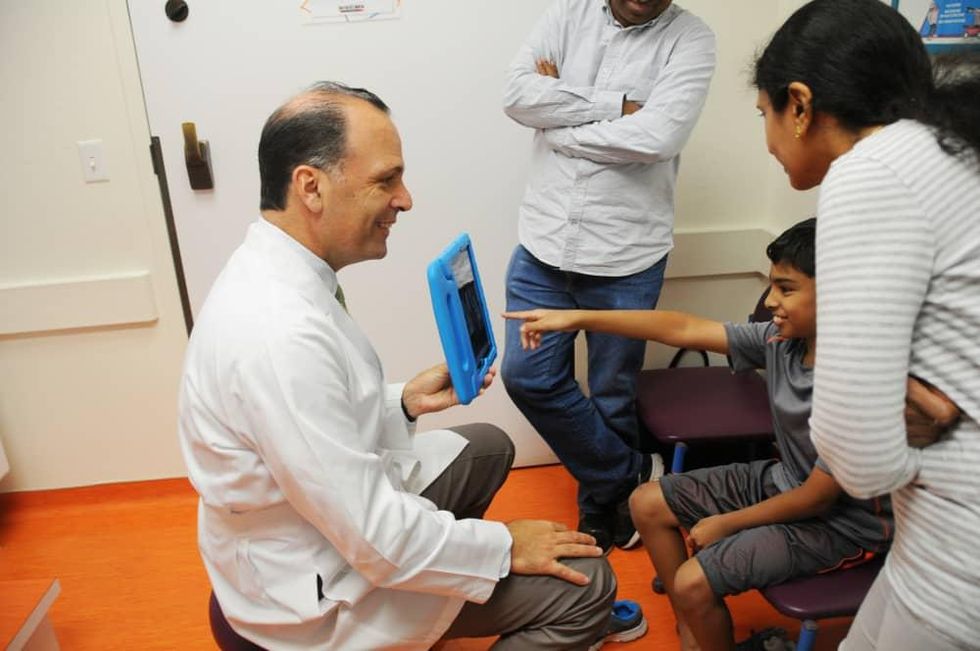Scoliosis Awareness Month
What parents need to know about scoliosis
If you've ever said, "stop slouching" or "stand up straight" to your child, you might consider having them screened for scoliosis. And if you've ever had questions about this curve-causing condition, we've got your back.
In honor of National Scoliosis Month, we sat down with Dr. Daniel J. Sucato, chief of staff and director of the Center for Excellence in Spine at Texas Scottish Rite Hospital for Children, to answer some of the most common ones.
What is scoliosis?
Scoliosis is a progressive condition that causes the spine to curve or twist into a "C" or "S" shape. There are many types of scoliosis, and kids can develop it at any age. It usually occurs between fifth and ninth grades, and it becomes more noticeable during a growth spurt.
Does bad posture lead to scoliosis?
Despite popular belief, scoliosis is not the result of slouching, bad posture, certain sleeping positions, lack of calcium, or regularly carrying heavy books or backpacks. It's not the result of doing anything "wrong," and there's no way to prevent it.
If scoliosis is not preventable, then why do kids get it?
For the most part, its cause is unknown. It has a tendency to run in families, and most often affects girls aged 10 to 15 years. Other types are less common and can be caused by a misshaped vertebra (a building block of the spine) or an underlying neurological disorder.
The specialists in the Center for Excellence in Spine are at the forefront of their profession for treating, researching, and pioneering care for scoliosis. Their team has made genetic breakthroughs and developed innovative treatments to help kids around the world stand taller.
How is it diagnosed?
You may suspect your child has scoliosis if you notice that his or her clothes are not hanging right, or if one shoulder blade looks like it's higher than the other. Your child's physician or school nurse can screen for scoliosis by looking for any unevenness or abnormalities in the shoulders, ribcage or back. They may take an X-ray or use a device called the scoliometer, as assistant chief of staff Dr. Karl Rathjen explains in the video above. If your doctor confirms your child has scoliosis, they can refer you to Scottish Rite Hospital for further evaluation.
How is scoliosis treated?
Scoliosis braces are usually prescribed for those curves above 25 degrees in patients whose spines are still growing. In some instances, surgery may be needed. The experts at Scottish Rite Hospital believe there is never a one-size-fits-all approach to treatment. No matter what type of spine problem a child has, their team will work closely with you and your family to determine the best treatment plan for your child, so they can get back to doing the things they love.
About Texas Scottish Rite Hospital for Children
Scottish Rite Hospital is world-renowned for healing muscles, joints, and bones. In addition to treating scoliosis and spine conditions, the pediatric orthopedic experts have nearly 100 years of experience caring for clubfoot, hand differences, hip disorders, sports injuries, and fractures, as well as certain related arthritic and neurological disorders and learning disorders.
To learn more, visit scottishritehospital.org.




 David and Melissa Loder's Elf Town is on Penbrook Court in the Deerfield subdivision of Plano. Photo courtesy of David and Melissa Loder
David and Melissa Loder's Elf Town is on Penbrook Court in the Deerfield subdivision of Plano. Photo courtesy of David and Melissa Loder